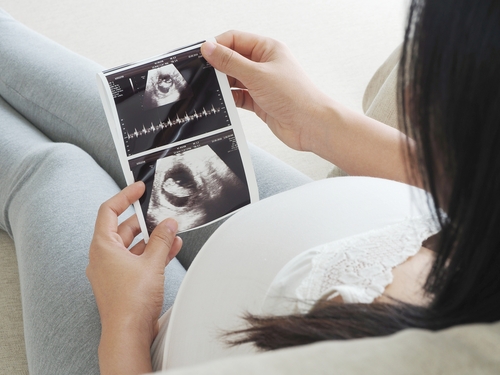Human Plasma-derived C1-INH Can Help Manage Hereditary Angioedema During Pregnancy, Study Reports

Treatment with human plasma-derived C1-INH is an effective and safe option for managing symptoms of severe hereditary angioedema during pregnancy and delivery, a Swedish case report suggests.
The study, “Management of Women with Hereditary Angioedema During Pregnancy and Delivery,” was published in the Journal of Anesthesia, Surgery and Operative Care.
Hereditary angioedema, or HAE, is a genetic disorder that causes swelling across multiple sites. These attacks can last for days and be life-threatening.
Depending on the underlying defect, the disease can be classified into four types.
Mutations in the SERPING1 gene are responsible for types 1 and 2. These patients have low levels or an inactive C1-inhibitor, which leads to excess bradykinin – the protein responsible for swelling. Hereditary angioedema type 3, also known as nC1-INH-HAE, is caused by mutations in the F12 gene, which also lead to increased bradykinin production. The fourth type has unknown origin. Mutations in other genes have also been reported in two new types of hereditary angioedema.
Because of the different origins and mechanisms, HAE patients can respond differently to environmental and mechanical trauma, including pregnancy and delivery.
Manifestations of HAE can also vary between patients and pregnancies, both in location and severity. However, “the majority of women experience an increase in [swelling] attack rate during pregnancy,” the researchers wrote.
Medicines to prevent or treat HAE attacks are not indicated for use during pregnancy and lactation. But previous studies have reported successful and safe use of human plasma-derived C1-INH (pdh-C1INH) concentrate. Tranexamic acid or fresh frozen plasma can also be considered for symptom management in these patients.
Researchers describe here a woman in the third trimester of pregnancy who had gestational diabetes and HAE type 1.
The patient had multiple attacks during the first half of her pregnancy, mostly affecting her legs, abdomen, and rectum. She was given plasma-derived C1-INH concentrate two to three times a week.
In the second half of the pregnancy, her symptoms were less severe, “which she considered derived from less stress due to being on sick leave during this period,” the researchers wrote.
Vaginal delivery is usually preferred in these patients to avoid attacks caused by surgical injury or breathing intubation. But in this case, the baby was in a position where his feet or buttocks would be delivered first, and physicians opted for a cesarean section with elective spinal anesthesia.
The patient received pdh-C1INH one hour before the surgery, and no events were reported during the surgery.
About one hour after the surgery, however, she experienced some hoarseness and mild lip swelling, but this resolved spontaneously without additional treatment.
“pdh-C1INH prophylaxis can be considered, especially in instrumental deliveries or for patients with severe symptoms, and should at least be immediately available in the delivery room,” the researchers concluded.
Following delivery, patients should be aware of increased risk of post-partum swelling, they added.
Because the patient did not plan to breastfeed, physicians also started her on cabergoline — a medicine that inhibits the production of the lactation hormone, prolactin — one day after delivery.





